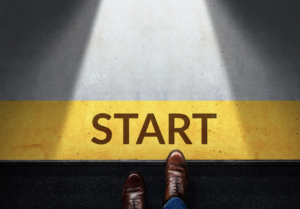Ads
This week marks a major milestone for space exploration as SpaceX launches NASA’s Crew-9 mission to the International Space Station (ISS). What was initially planned as a routine crew rotation has now transformed into a daring rescue mission to bring two astronauts stranded aboard the ISS back to Earth. Let’s delve into how this rescue mission came to be and the challenges that NASA has faced along the way.
The Crew-9 mission, scheduled for Thursday, September 26, will see NASA astronaut Nick Hague and Roscosmos cosmonaut Aleksandr Gorbunov traveling to the ISS onboard a SpaceX Crew Dragon spacecraft. Originally, the mission was set to include mission specialists Zena Cardman and Stephanie Wilson. However, a last-minute change was made to prioritize the return of two astronauts, Butch Wilmore and Suni Williams, who have been marooned aboard the ISS for eight months.
The saga of Wilmore and Williams began on June 5 when the Boeing Starliner capsule, scheduled to carry them back to Earth, experienced a malfunction during the Crew Flight Test (CFT), the first crewed mission of the spacecraft. Helium leaks in the propulsion system and thruster failures were detected, prompting NASA to ground the spacecraft for extensive testing and evaluations at the White Sands Test Facility in New Mexico.
In the following months, NASA grappled with the challenge of safely returning the stranded astronauts to Earth. Internal assessments revealed that it was imperative to conduct a successful deorbit burn for a safe reentry. The decision was made to bring the Starliner capsule back uncrewed, leaving Wilmore and Williams onboard the ISS until a suitable transport vehicle, like Crew-9, could bring them home.
This was not the first setback encountered by the Starliner program. A previous uncrewed test flight in December 2019 failed to reach the ISS due to software glitches. A subsequent test flight in May 2022 was successful, albeit delayed, in reaching the station and returning safely to Earth.
NASA’s commitment to safety and adherence to stringent protocols was reinforced during this crisis. Administrator Bill Nelson emphasized the importance of putting astronaut safety first, drawing parallels to past spaceflight tragedies like the Challenger and Columbia disasters. The decision to keep Wilmore and Williams aboard the ISS was a testament to NASA’s unwavering dedication to crew well-being.
The situation echoes a similar incident from the previous year when astronaut Frank Rubio found himself stranded on the ISS due to a coolant leak on his spacecraft. Rubio set a U.S. record for the longest continuous stay in space, enduring 371 days before a new transport vehicle could bring him back to Earth.
As Crew-9 prepares for launch, it carries with it a sense of history and significance. It will mark the first crewed mission from Space Launch Complex-40 (SLC-40) at Cape Canaveral Space Force Station, Florida. Nick Hague’s role in the mission is especially noteworthy as he will become the first active U.S. Space Force Guardian to launch into space since the establishment of the Space Force in 2019.
In conclusion, while Crew-9 may have started as a routine crew rotation, it has evolved into a high-stakes rescue mission that underscores the complexities and challenges of human spaceflight. NASA’s unwavering commitment to safety and the well-being of its astronauts has been evident throughout this endeavor. As we eagerly await the successful return of Wilmore and Williams, let us reflect on the resilience and dedication of those who push the boundaries of exploration and venture into the unknown reaches of space.






